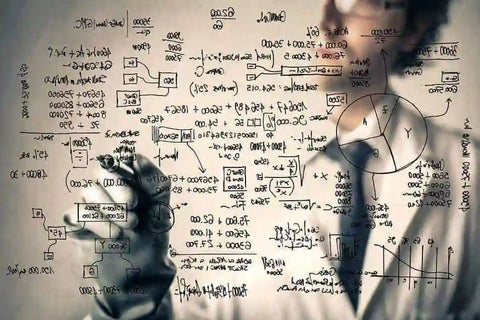Proofreading a Thesis or Dissertation for Final Examination
When a student has finally reached the point at which all major aspects of a thesis or dissertation are finished and the examination process has been initiated, it is a time for celebration. It is a significant achievement, after all, to have progressed so far, and given that supervisors and other committee members rarely recommend proceeding to examination unless they are fairly certain about the candidate’s success, you will likely have your degree relatively soon. However, this is also a time for a thorough proofreading of the entire document before it is distributed to the examiners. The thesis or dissertation you submit for examination must achieve the highest standard of scholarly writing and presentation if it is to do justice to all the hard work you have invested, yet proofreading, editing and polishing a long academic or scientific document are far from quick and simple processes. Language and argument are perennial concerns, of course, and always deserve scrutiny, but the following list outlines certain practical aspects of academic and scientific writing that tend to require special attention when proofreading a thesis or dissertation for final examination.
• References are notorious for containing errors, so the complete references in your list and the in-text citations of sources in your running text should be checked and corrected with care to observe with consistency the documentation style preferred by your department or supervisory committee. A thorough job involves checking each complete reference against the source and then comparing complete and in-text references to ensure accuracy and perfect matches.
• Direct quotations require extra care. Each quotation should be checked word-for-word against the source for accuracy and accompanied by a reference that includes the precise location (usually via a page number) of the borrowed passage in the source.
• The table of contents for a thesis or dissertation may be designed early in the writing process and undergo many changes, so checking it one last time to ensure that everything is exactly as it should be is an excellent idea. Comparing the heading in the table for each part, section and subsection to the heading for each part, section or subsection in the text itself will often reveal a few inconsistencies even at this stage.
• The structural apparatus of a thesis or dissertation should be checked not just for consistency against the table of contents, but also to make sure that everything appears in the right place and order. Any special fonts, font sizes, numbering, capitalisation patterns and the like that you may have used to distinguish heading levels will need a careful check as well.
• Tables, figures, appendices and any other ancillary material of this sort should be checked for clarity and accuracy, remembering that the more densely packed with information an element is, the more likely it is that errors will creep in and remain unnoticed. Be sure to compare data that appear in ancillary parts of your thesis or dissertation with the same data elsewhere in the text to ensure consistency.
• Numbers, symbols and standard abbreviations are frequently sites of errors as well, often simply because the specific formats required for them are not observed or not observed with sufficient consistency throughout a thesis or dissertation, so these should be checked against guidelines with special care.
• Any specialised terminology, discipline-specific jargon or nonstandard abbreviations that you may have used in your thesis or dissertation will probably require explanations or definitions, so do be attentive to whether these elements are as clear and concise as they should be for a wide range of the readers you anticipate.
Why Our Editing and Proofreading Services?
At Proof-Reading-Service.com we offer the highest quality journal article editing, dissertation proofreading and online proofreading services via our large and extremely dedicated team of academic and scientific professionals. All of our proofreaders are native speakers of English who have earned their own postgraduate degrees, and their areas of specialisation cover such a wide range of disciplines that we are able to help our international clientele with research editing to improve and perfect all kinds of academic manuscripts for successful publication. Many of the carefully trained members of our manuscript editing and proofreading team work predominantly on articles intended for publication in scholarly journals, applying painstaking journal editing standards to ensure that the references and formatting used in each paper are in conformity with the journal’s instructions for authors and to correct any grammar, spelling, punctuation or simple typing errors. In this way, we enable our clients to report their research in the clear and accurate ways required to impress acquisitions proofreaders and achieve publication.
Our scientific proofreading services for the authors of a wide variety of scientific journal papers are especially popular, but we also offer manuscript proofreading services and have the experience and expertise to proofread and edit manuscripts in all scholarly disciplines, as well as beyond them. We have team members who specialise in medical proofreading services, and some of our experts dedicate their time exclusively to dissertation proofreading and manuscript proofreading, offering academics the opportunity to improve their use of formatting and language through the most exacting PhD thesis editing and journal article proofreading practices. Whether you are preparing a conference paper for presentation, polishing a progress report to share with colleagues, or facing the daunting task of editing and perfecting any kind of scholarly document for publication, a qualified member of our professional team can provide invaluable assistance and give you greater confidence in your written work.
If you are in the process of preparing an article for an academic or scientific journal, or planning one for the near future, you may well be interested in a new book, Guide to Journal Publication, which is available on our Tips and Advice on Publishing Research in Journals website.








